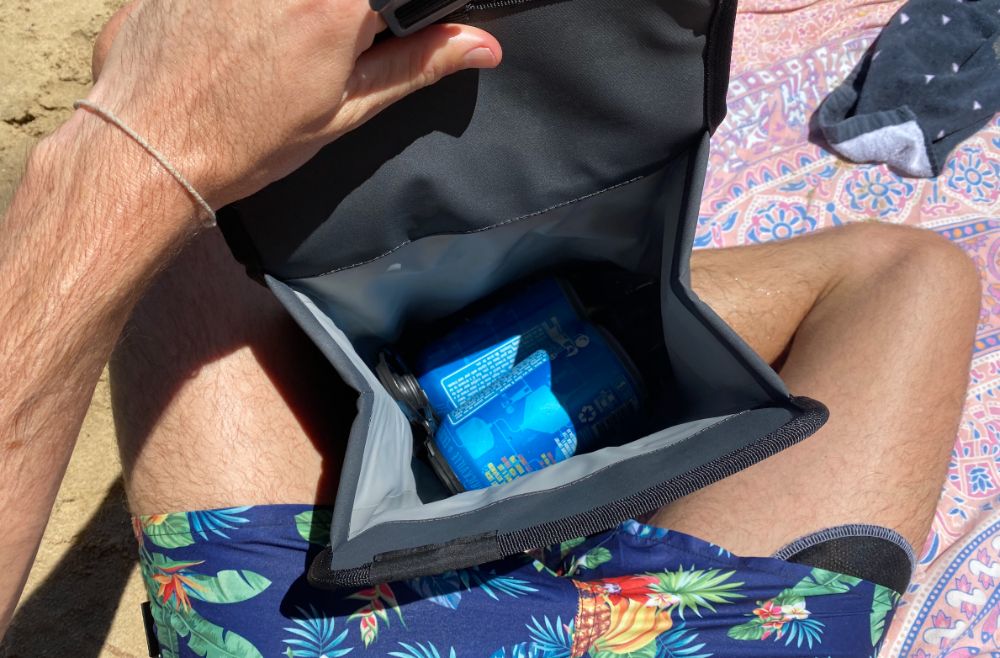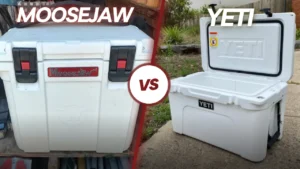Insulated bags are great for keeping your drinks and lunch cold. However, they don't actively keep your food and drinks cold without the addition of ice or ice packs.
But can you fill an insulated bag with regular ice cubes or can you only use sealed ice packs?
Filling an insulated bag with loose ice is NOT a good idea as the ice will start melting in around 1-3 hours. Most lunch bags are not completely water-proof so the water will leak out, especially from the bag’s opening. Even if the bag can keep the water from leaking, the moisture for the melted ice can get into your food. Ice packs are always recommended over regular ice.
You can use alternatives to ice cubes such as ice packs to keep your food chilled and avoid splashing water all over. They provide many benefits over loose ice or ice cubes and can be used again and again.
This article will tell you why you shouldn't put ice in a lunch bag and what other alternative methods you can use to keep your drinks and lunch cold for hours.
What Will Happen If You Put Ice Cubes In An Insulated Bag?
Ice cubes in your lunch bag will not remain solid for very long. Depending upon your lunch bag’s quality they may last 1-3 hours at best. The warmer the day the quicker the ice will begin melting.
Most lower-end insulated bags are not waterproof and will leak through the seams as your ice melts inside them.
The zipper or opening lid of most insulated bags is not water-proof and provides a way for melted ice to leak out – even if the bag itself is waterproof.
Usually the inside of most insulated bags isn’t waterproof at all. So even if you plan to keep them upright and steady to avoid spilling out of the lid, they will still leak everywhere.
The water from the melted ice will also seep into the fabric of your insulated bag soaking it through and making the bag itself completely wet.
Not only will your bag leak everywhere but this can cause it to grow mold if you don’t clean it and you also won’t be able to use your lunch bag again until it completely dries.
Investing in a high-quality waterproof insulated bag will stop your bag from leaking as the ice melts. I personally use and recommend the Yeti DayTrip (click here to see my full review) as it's a smell compact bag that is waterproof when upright and has surprisingly good insulating ability.
If you're looking for something slightly larger you can check out my list of the best waterproof soft coolers.
However, even with a waterproof insulated bag the water from your melted ice can enter any poorly sealed food and make it all mushy.
Nobody likes soggy sandwiches!
Can You Put Ice In A Thermal Bag?

You can definitely put ice in a thermal bag – if that thermal bag is made from plastic and not paper.
Thermal bags use a thin layer of plastic as well as a metallic lining to help keep food hot or cold. They usually contain a watertight ziplock seal at the top, which makes them waterproof.
Even if a thermal bag becomes wet from the melted ice you can always recycle it and use a new one instead.
Thermal bags made from plastic (Amazon) are well suited to carry ice. You can seal them completely to largely minimize the chances of water spilling.
Some thermal bags are made from paper and these are not ideal for carrying ice cubes. The melted ice will eventually cause water build-up and may even rupture the bag.
What Are The Alternatives To Putting Ice Cubes In An Insulated Bag?
While ice cubes aren't great to use in insulated bags there are a bunch of great options to keep food and drinks cold without having to deal with the mess of melt ice cubes.
Using Ice Packs
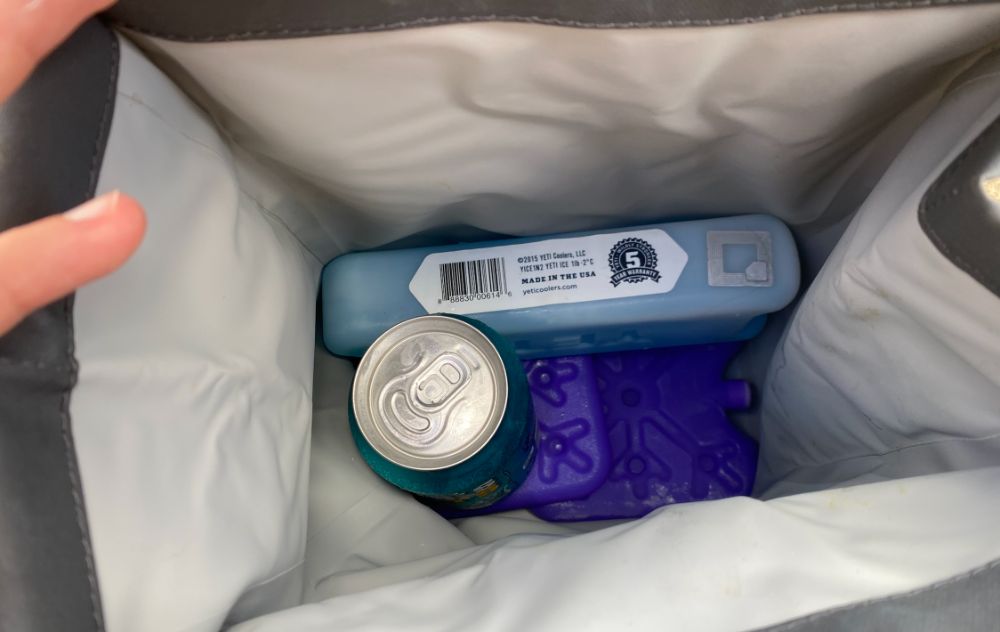
The most practical and hassle-free alternative to ice cubes is using ice packs. Ice packs are filled with refrigerant gel or liquid that can be frozen and used in place of ice.
They can keep the things chilled inside an insulated bag for hours at a time. Ice packs are just as good (if not better) than regular ice when it comes to keeping items cold in your lunch bag.
As they melt the liquid remains contained in the ice pack so there is no mess to clean up and no water that'll make your sandwiches soggy.
Once an ice pack melts it can be re-used unlike ice cubes. They also don’t wet the area around keeping everything nice and tidy.
You should put multiple ice packs under and above the items inside to achieve maximum chilling. Click here to learn the ideal way to pack ice packs in your lunch bag.
Putting Ice In A Water-Proof Container
If you don’t want to invest in ice packs then you can place the ice in a ziplock bag or a Tupperware container.
This way you can benefit from the cooling effect of ice while keeping the inside material dry simultaneously. You can easily take out the water from such storage bags and containers or freeze them again for future use.
Click here to learn 10 easy ways to make your own ice packs at home.
Make Your Own Ice Packs
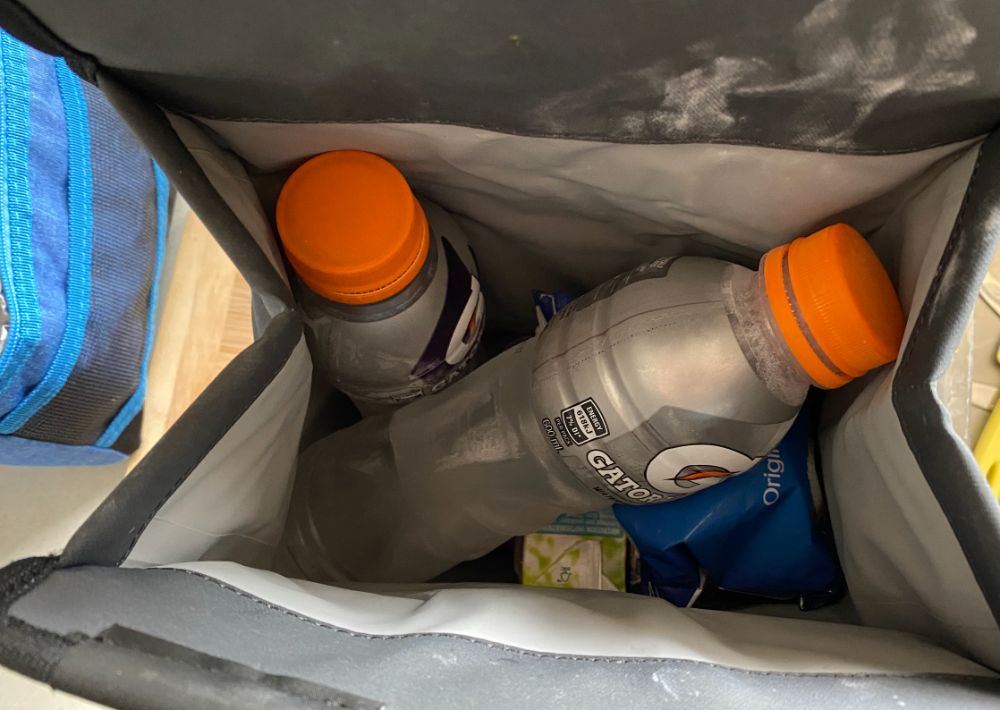
Another option is to make your own ice packs at home.
You can fill a bottle with water and completely freeze it for several hours. This frozen bottle can act as an ice pack and you can put multiple bottles in your insulated bag.
Not only will they keep your food chilled for long but you will also have a cold water supply at hand all time. Just remember to fill the bottles with clean drinking water.
Where To Put Ice Packs In An Insulated Bag?
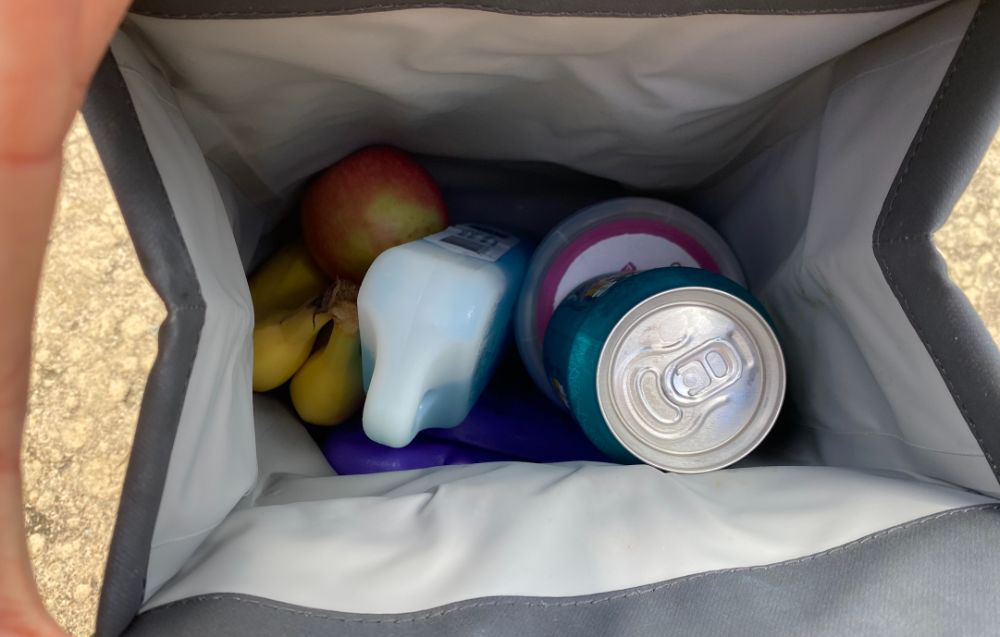
Whether you are using ice-filled ziplock bags, gel packs (which are mostly smaller in size) or bigger ice packs, their positioning in the insulated bag or container plays an essential role in how long they last and how cold your food will stay.
- Start by placing one or more ice packs at the bottom. You can also use a block of ice if you’re only carrying drinks or canned food in the lunch bag. Block ice has a less surface area than crushed ice so it will last longer.
- Above this layer place your drinks and other properly packed foods. Fill the spaces between the items with more ice packs.
- Now put the perishable food that needs to stay away from moisture on top. You can also set a thin ice pack above it.
This setup will prevent the outside heat from getting in and create a cold air circulation in the insulated bag or cooler keeping the inside chilly and cold.
Summary
Directly putting ice cubes in an insulated bag is not a good idea because:
- Ice will start melting after 1-3 hours.
- The melted ice can leak through your insulated bag especially from the bag’s opening.
- High-quality insulated bags can keep the water contained but the water will make your food moist and soggy.
- Ice packs, and frozen water bottles are much better alternatives than loose ice for use in insulated bags.

